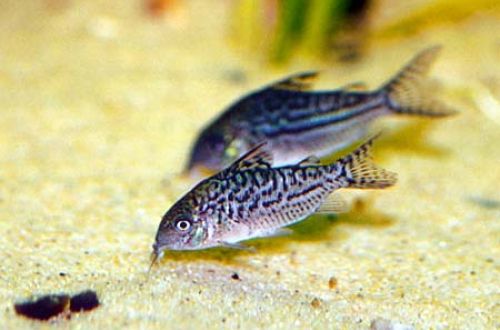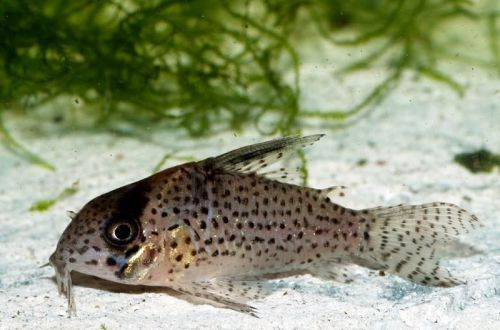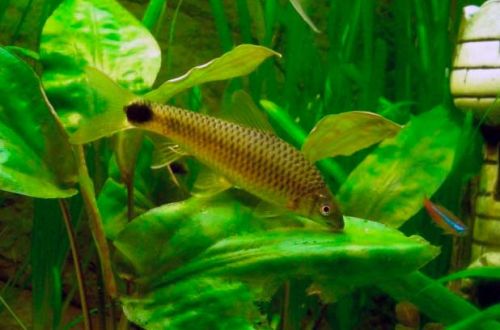
Catfish mesh
The reticulated catfish, scientific name Corydoras sodalis, belongs to the family Callichthyidae (Shell catfish). The fish is native to South America. It inhabits the upper basin of the Amazon River in the territory of Loreto, the northern region of Peru, and the vast Brazilian state of Amazonas bordering it. It occurs mainly in small tributaries, streams, in areas of flooded forest.

Description
Adult individuals reach a length of about 5 cm. Catfish has a strong stocky body, covered with rows of bone plates that protect the fish from small predators. An additional means of protection are thickened and pointed first rays of the fins, which are spikes.
The coloration consists of a reticulated dark pattern on a light background. In its external appearance, the catfish is almost identical to another closely related species Corydoras reticulum. The only difference is that the Reticulate Catfish does not have a black spot on the dorsal fin.
Behavior and Compatibility
Peaceful calm look. It gets along well with many other fish of comparable size, including representatives of the Corydoras genus. They prefer to be in groups, so it is recommended to purchase a flock of 3-4 individuals. Large, aggressive and territorial tankmates should be avoided.
Brief information:
- The volume of the aquarium – from 40 liters.
- Temperature – 20-25°C
- Value pH — 6.0–8.0
- Water hardness – soft to hard (2-25 dGH)
- Substrate type – any soft
- Lighting – moderate or bright
- Brackish water – no
- Water movement – light or moderate
- The size of the fish is about 5 cm.
- Food – any sinking food
- Temperament – peaceful
- Keeping in a group of 3-4 fish
Maintenance and care, arrangement of the aquarium
The optimal size of an aquarium for a flock of 3-4 fish starts from 40 liters. In the design, it is necessary to provide for a soft substrate and several shelters. The latter can be both natural (driftwood, leaves, nut shells, thickets of plants) and artificial decoration elements. The lighting is subdued. Shading can also be achieved by using floating plants.
As a rule, fish grown in aquariums, and not exported (caught) from the wild, successfully adapt to life in various water conditions. The catfish is no exception, so if it has been bred in aquariums for several generations, it has probably managed to adapt to relatively wide ranges of pH and dGH values, which greatly simplifies maintenance in terms of water replacement and maintaining proper hydrochemical composition.




